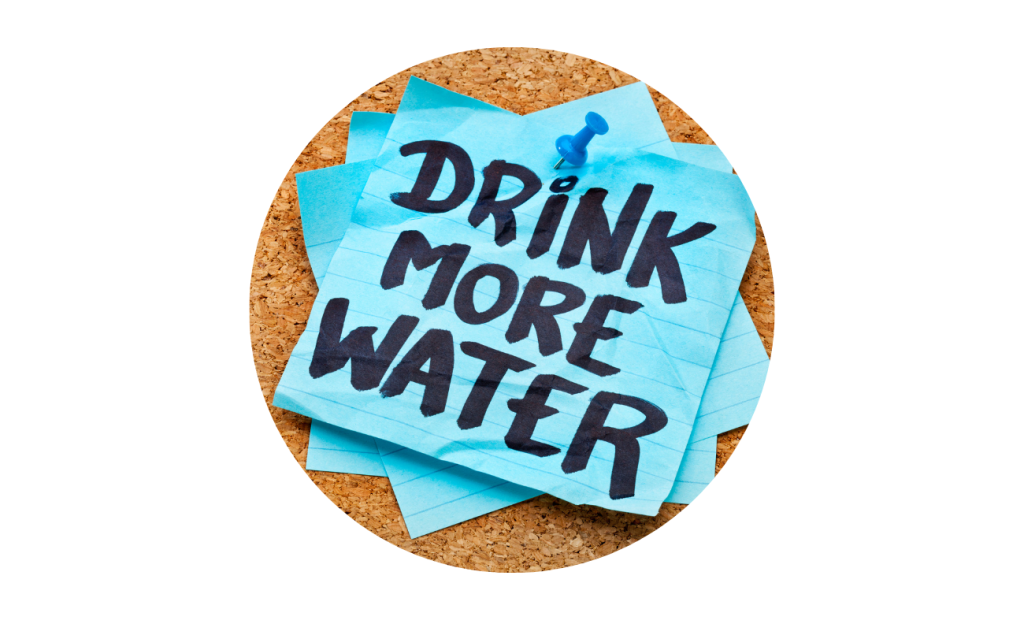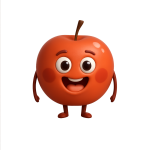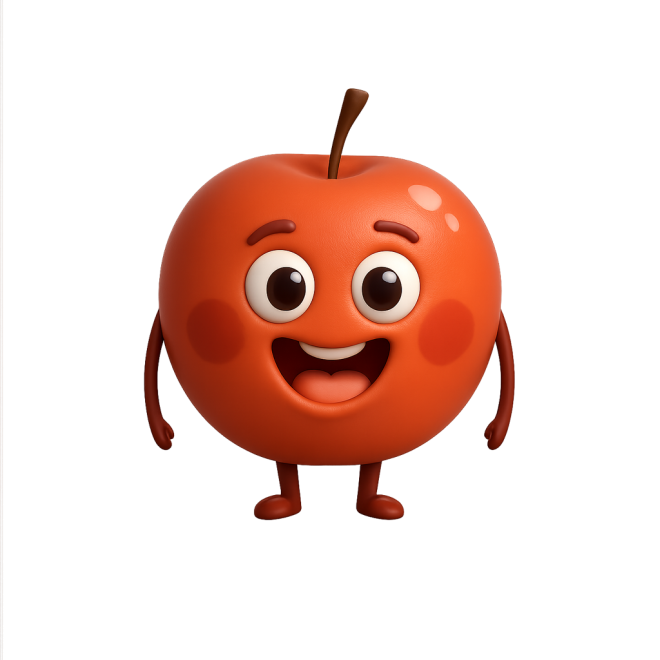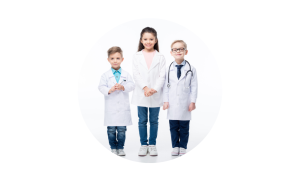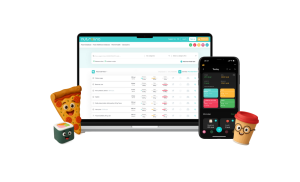Water isn’t just a sidekick to your lunch. It’s your body’s essential gear.
Every single day, your body needs enough fluids to keep everything running smoothly—from digestion to brain power. And when you don’t get enough? Dehydration kicks in. And trust us, it can seriously mess things up.
📉 Dehydration affects up to 17–28% of adults. It’s a common cause of hospitalizations, worsening health conditions, and even premature death. The risk is even higher, up to 30% in older adults. Why? Weaker thirst signals, reduced mobility, chronic conditions (like diabetes or kidney disease), and certain medications.
💧 About 20–30% of your daily fluid intake comes from food. The rest? You have to drink it. Yes, drink it. Not coffee. Not sugary soda.
You need:
W – A – T – E – R.
Types of Dehydration (yep, there’s more than one)
Not all dehydration is created equal. Your body can lose water and salt in different ratios—and depending on the type, the outcome can vary.
👉 Isotonic dehydration
- Water and salt are lost in equal amounts
- Common causes: diarrhea, vomiting, heavy sweating, kidney disease, high blood sugar, or adrenal insufficiency
👉 Hypertonic dehydration
- The body loses more water than salt
- Can happen during fever, diabetes, excessive urination, or intense breathing
- May lead to hypernatremia (dangerously high sodium levels)
👉 Hypotonic dehydration
- More salt is lost than water
- Often caused by the use of diuretics (water pills)
In a healthy adult, water makes up about 60% of total body weight. Losing just 3% of that? Your body starts to sound the alarm.
🍼 Babies and young children are even more sensitive. Their bodies hold more water—around 70% for infants and 65% for small children. And because their energy and metabolism needs are higher, they dehydrate much faster.
Signs of Dehydration: Your Body Will Tell You. The Question Is—Are You Listening?
How do you know you’re low on water? Your body starts sending signals – some quiet, others impossible to ignore.
👀 Different symptoms depend on how much of your body weight you’ve suddenly lost.
🔸 Mild dehydration (sudden loss of 2–3% of body weight)
Feel “just a little thirsty”? Then you’re already dehydrated. The early warning signs might seem harmless:
- Mild thirst
- Trouble focusing, remembering, learning, thinking
- Mood changes
- Your body doesn’t cool down as easily
- Lower performance during aerobic exercise
🔸 Moderate dehydration (sudden loss of 3–5%)
Now it’s not just about thirst—your body starts pushing back:
- Dry mouth
- Weaker memory (especially in kids)
- Reduced athletic performance
- Headache
- Fatigue, dizziness, drowsiness
- Dry skin
- Faster breathing
- Higher body temperature (especially in kids)
- Lower muscle endurance and strength
- You overheat faster—and can’t cool down efficiently
🔸 Severe dehydration (loss of 6–9%)
At this stage, it’s serious. Your body is under acute stress—and it shows:
- Sunken eyes
- No tears
- Impaired temperature regulation
- Dry mouth, no saliva
- Low blood pressure (hypotension)
- Fast heart rate (tachycardia)
- Skin loses its elasticity (skin turgor—when pinched, it stays wrinkled)
⚠️ Heads up: Losing 10% or more = high risk of collapse or even death.
Most Common Signs of Dehydration – Ranked by How Often They Show Up
💋 Dry lips – 87%
The most common red flag that you’re low on water. Sure, lip balm helps… but a glass of water helps way more.
💧 Thirst – 84%
If you’re thirsty, you’re already dehydrated. Thirst is a delayed warning signal—not a prevention strategy.
👅 Dry tongue – 76%
A classic we tend to ignore. If your mouth feels dry, your body is already cutting back on water use.
🚽 Reduced urination – 54%
Not hitting the bathroom much? Time to drink up.
💛 Dark urine – 51%
Highly concentrated pee (dark yellow to orange) is a clear sign you’re running low on fluids.
😵 Fatigue and poor focus – 46%
Sometimes it’s not about the coffee you skipped. It’s the glass of water you didn’t drink.
🤕 Headaches and dizziness – 40%
Yep, that headache might just be dehydration. Before reaching for meds, reach for water.
💪 Muscle weakness – 25%
Your body can’t push if it doesn’t have fuel. And water is fuel.
😤 Rapid breathing – 23%
⚡ Muscle cramps – 16%
Less water = fewer electrolytes. And when those drop, cramps come knocking.
Where Does the Water in Your Body Go?
💧 The short answer? Everywhere. And if you ignore it, your body will make sure you feel it—fast.
Kidneys: Tiny filters with a huge job
Your kidneys are basically your body’s internal cleanup crew. Every single day, they filter waste, regulate water levels, and help maintain internal balance.
When you don’t drink enough, they have to work overtime. And if you’re piling on salty foods or toxins? You’re speeding up their wear and tear.
➡️ Want to help them out? Give them water. It’s that simple. Waste doesn’t flush itself.
Sweating: Cooling mechanism that can wipe you out
When you exercise or it’s hot out, your body sweats to stay cool. It’s natural, smart—and risky if you’re not refueling properly.
Athletes can lose 6–10% of their body weight just through sweat. If they don’t replace that? Risk of dehydration skyrockets. So does the strain on your heart. Hello, exhaustion.
👉 Not sure if you’re overdoing it—or under-hydrating? Step on a scale before and after a workout.
If your weight dropped more than 2%, your body is screaming for fluids.
Quick math: 1 kg lost ≈ 1 liter of fluids.
- If you gained weight? You might’ve overdone it on water.
- If you lost weight? Time to refill your bottle.
Extreme sweating (especially during heat or intense exercise) also means more sodium loss. You’ll need to replace both water and electrolytes, especially sodium (Na+).
Skin: Not everything is fixed by a glass of water
One of the biggest myths? “Drink more water and your acne will disappear.” Nice idea. Reality? A bit more complex.
Dry skin is usually caused by dry air, hot showers, harsh soaps, certain health conditions, or medications. Water helps – but only up to a point.
Visible signs of dehydration on the skin show up only when things get serious – when you lose skin elasticity (aka “skin turgor”). At that point, it’s not just about “a less dewy glow.” It’s a warning sign.
GI Tract: When fluids go right down the drain
Diarrhea and vomiting = rapid fluid and salt loss. And no, you can’t “just tough it out”—you’ll end up worse.
In these cases, don’t reach for soda or fruit juice. Drink a rehydration solution that restores water and electrolytes in the right ratio. We have a homemade recipe – you can find it below in this article.
🥄 The best approach? Go slow—1 teaspoon every 1–5 minutes.
Steady, consistent sips. No sugar bombs. Juice can actually make diarrhea worse.
No rehydration solution at home? You can DIY it:
Homemade rehydration drink:
- 1 liter of water
- 6–7 teaspoons of sugar
- 1–2 teaspoons of salt
- A small splash of orange or grapefruit juice (no pulp, no fiber!)—just a touch for better taste.
It should taste slightly sweet, slightly salty.
Sip it in small doses:
- ➡️ Adults: approx. 50–100 ml per kg of body weight over 4 hours
- ➡️ Kids: approx. 30–50 ml per kg of body weight
Even with dehydration, one rule always holds: Prevention is easier than damage control. Sometimes your body whispers before it screams. Don’t wait for the shouting. 💧
Most Common Causes of Dehydration
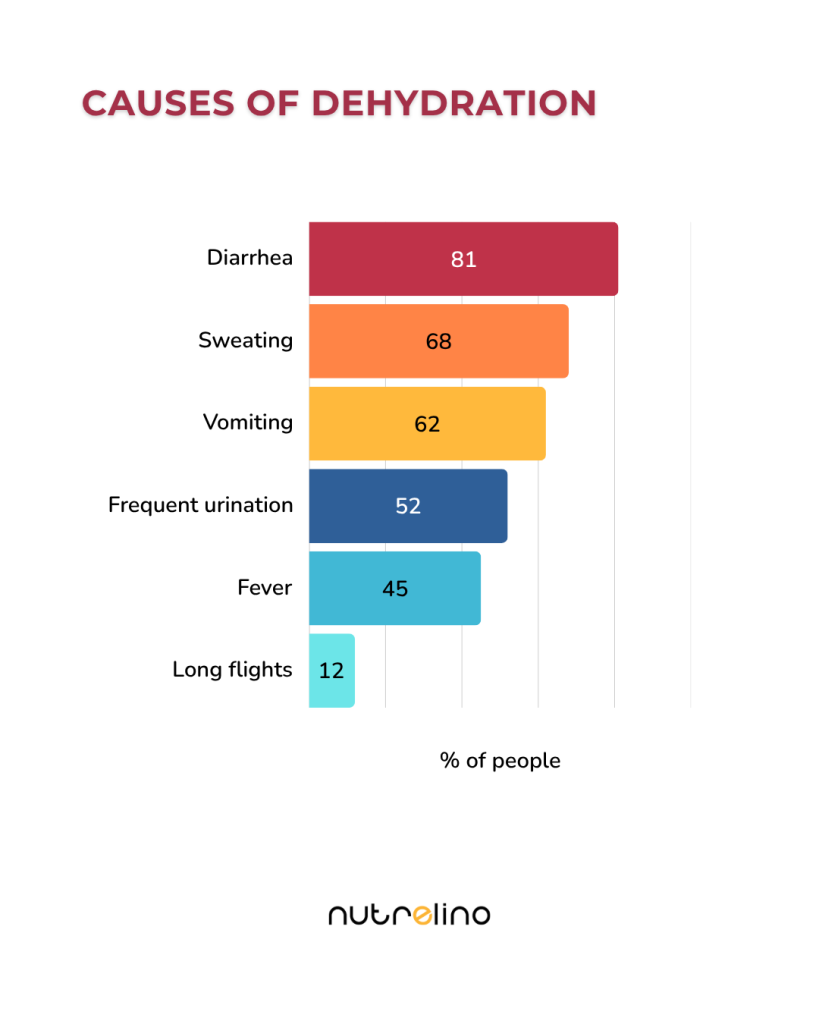
Recommended Fluid Intake
So… how much water do we actually need?
Let’s start with a few basic rules everyone should know if they want to keep their hydration in check:
🔹 Sugary drinks? Better skip them. They only raise your calorie intake—along with your risk of weight gain, obesity, diabetes, and heart disease.
🔹 Sports drinks? Sure, but only if you’re exercising for over an hour. Their job is to replace electrolytes and sugar your body burns during intense workouts.
🔹 Energy drinks? No, nope, and still no. They’re not meant for hydration, and all that caffeine and sugar can actually make things worse for your body.
The truth is: your fluid needs depend on a ton of factors—weather, diet, physical activity, and overall health.
That’s why there’s no universal number. Each country has its own guidelines, and they often vary. You’ll find different values in Europe than in the US. And even then – they’re just estimates.
📌 Below you’ll find recommended daily fluid intake (not counting the water you get from food). This is what you should actually drink as fluids – shown as a range based on EU (first number) and US (second number) recommendations.
💧 Daily Fluid Intake for Optimal Health:
👶 Infants
- 0–6 months: 680–700 ml
- 6–12 months: 800–1000 ml
🧒 Children
- Up to 3 years: 1300 ml
- 3–9 years: 1600–1800 ml
- 9–18 years:
- boys: 2100–3000 ml
- girls: 1900–2300 ml
👨 Adult Men
- 18–50 years: 2500–3700 ml
- 50+ years: 2200–2500 ml
👩 Adult Women
- 18–50 years: 2000–2700 ml
- 50+ years: 1900–2200 ml
- Pregnant/breastfeeding: 2400–3100 ml
💪 If you’re working out, it’s a good idea to replenish about 500–1000 ml of water, depending on the intensity.
And your best bet? Plain water. It’s cheap, calorie-free, ad-free, and usually available. You can switch it up with electrolyte drinks—especially if you sweat a lot or exercise in hot weather.
How to Keep Your Hydration in Check
It’s not rocket science – just a few simple habits you can weave into your everyday life:
- Sip water throughout the day, not just when you feel “super thirsty” – by then, it might already be too late.
- Eat foods high in water – fruits and veggies like watermelon, oranges, pineapple, strawberries, cucumbers, lettuce, or zucchini can make up 20–30% of your daily fluid intake.
- Watch your caffeine and alcohol – they increase fluid loss and can dry you out without warning.
- Keep a water bottle in sight – on your desk, in your bag, in the car. If you see it, you’ll drink from it.
- Use a bottle with markings – so you know how much you’ve had and how much more to go.
- Set a reminder on your phone – every 2–3 hours. Boring? Maybe. Effective? Absolutely.
- Link drinking to your daily routines – after brushing your teeth, with meals, before bed, when you go to the bathroom… make it automatic.
- Add something fun to your water – a slice of lemon, a sprig of mint, fresh fruit, cucumber.
- Use a straw – sounds silly, but many people drink more without even noticing when they use one.
- Track your hydration directly in Nutrelino – we’ll help you stay balanced, even on your busiest days. You can log your water, mineral water, or tea right inside your meal plan. Sometimes, all it takes is a gentle reminder for your body to get what it needs.
💡 Bonus for rebels:
Set a goal like “Finish this bottle by dinner” – or turn it into a game and challenge yourself to hit your hydration mark by a certain hour.
✅ Proper hydration isn’t just about performance – it’s about your health. So don’t brush it off. Your body will thank you for it. 💙
Sources:
- https://www.ncbi.nlm.nih.gov/books/NBK555956/
- https://www.ncbi.nlm.nih.gov/pmc/articles/PMC6282244/
- https://www.ncbi.nlm.nih.gov/pmc/articles/PMC2908954/
- https://www.ncbi.nlm.nih.gov/books/NBK436022/
- https://www.ncbi.nlm.nih.gov/pmc/articles/PMC6723555/
- https://www.ncbi.nlm.nih.gov/pmc/articles/PMC5790864/
- https://www.ncbi.nlm.nih.gov/pmc/articles/PMC6412353/
- https://pubmed.ncbi.nlm.nih.gov/20356431/
- https://www.ncbi.nlm.nih.gov/pmc/articles/PMC6315424/
- https://www.ncbi.nlm.nih.gov/pmc/articles/PMC4207053/
